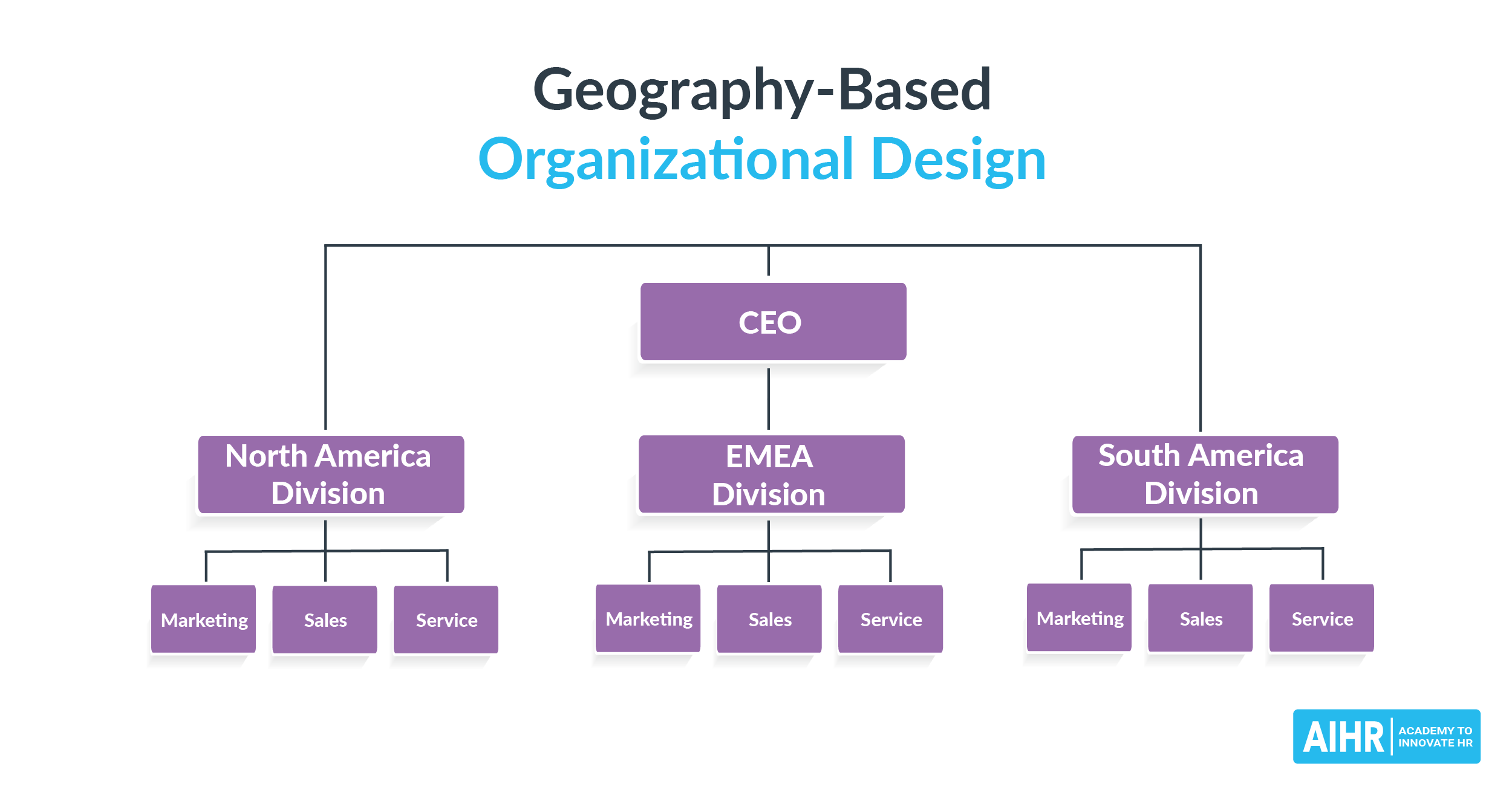Flat Organizational Structure
What is a flat organizational structure?
A flat organizational structure (or horizontal organizational structure) is one with limited management levels between the top business leadership and ground-level employees. Employees may report directly to the business owner or answer to only one or two levels of management, who oversee all the team members.
Many small to medium-sized businesses (SMBs) operate on a flat organizational structure, keeping management simple without needing deep layering of authority and oversight.
Some examples of companies with flat organizational structures include:
- Valve: The video game developer behind hits like Half-Life and Portal operates with almost no formal hierarchy. Employees at Valve choose the projects they work on and collaborate across teams without the need for managerial approval.
- Buffer: This social media management company operates with a highly transparent and flat structure. They share everything from financials to individual salaries with all employees, and decision-making is often decentralized, empowering employees to take ownership of their work.
- Morning Star: The tomato-processing company uses a unique structure that involves no formal bosses. Employees negotiate responsibilities and commitments with their peers directly, operating without traditional management layers.
Understanding different organizational structures is key to improving efficiency and adaptability. For a step-by-step guide on optimizing your organization’s design, download our Organizational Development Process Cheat Sheet and start building a more effective workplace today.
Characteristics of a flat organizational structure
Here are some characteristics of a flat organizational structure:
- Fewer management layers: In a flat structure, the organizational hierarchy has fewer levels between the top executives and the frontline employees.
- More flexibility and adaptability: Flat organizations are typically more adaptable to changes. The lack of extensive hierarchical levels allows them to react faster to market or environmental changes.
- Informal work environment: Organizations with this structure tend to foster a more informal and relaxed work environment. The proximity of staff to top management and the reduced emphasis on formal titles help create a more approachable and less rigid atmosphere.
- Coaching leadership style: Leaders in flat organizations typically adopt a coaching style rather than an autocratic one. This approach aligns with the emphasis on employee empowerment and participation.
Flat organizational structure example
Consider this fictional version of a flat organizational structure example:
LogisticsCo is a local warehouse distribution center. Most of the employees work directly on the warehouse floor, whether they are receiving shipments, building orders, or restocking inventory.
Each team is responsible for its own duties, but they do not have authority over one another. The warehouse employs over 50 people, and its single management layer consists of only three supervisors. Problems are often taken directly to the owner, who is hands-on and available most of the time.
The organization chart looks like this:
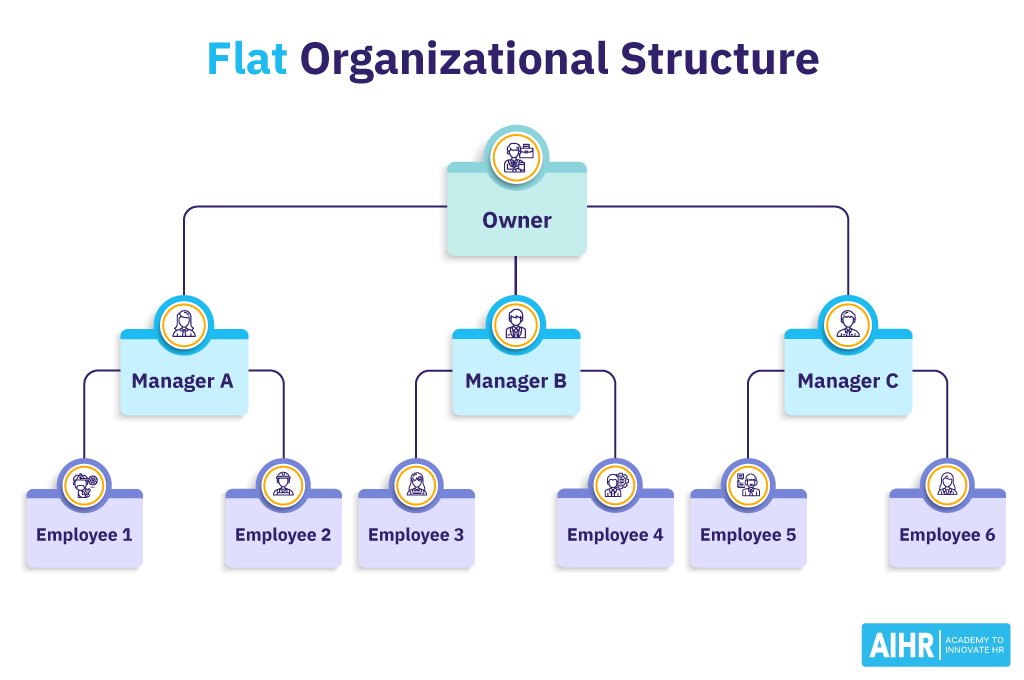
Tall vs. flat organizational structure
Management layers
Fewer levels (one to three) of management and a broader span of control.
Many levels (three to over 50) of management and a narrower span of control.
Business size
Better suited for small to medium-sized businesses or those that require fast adaptation.
Better suited for large organizations or those that need a rigid structure to manage complex operations.
Industries
- Tech startups
- Creative agencies
- Small businesses
- Large corporation
- Government agencies
- Multinational enterprises
Notable features
- Equality
- Shared responsibility
- Unity
- Rapid decisions.
- Advancement
- Career building
- Tiered decisions.
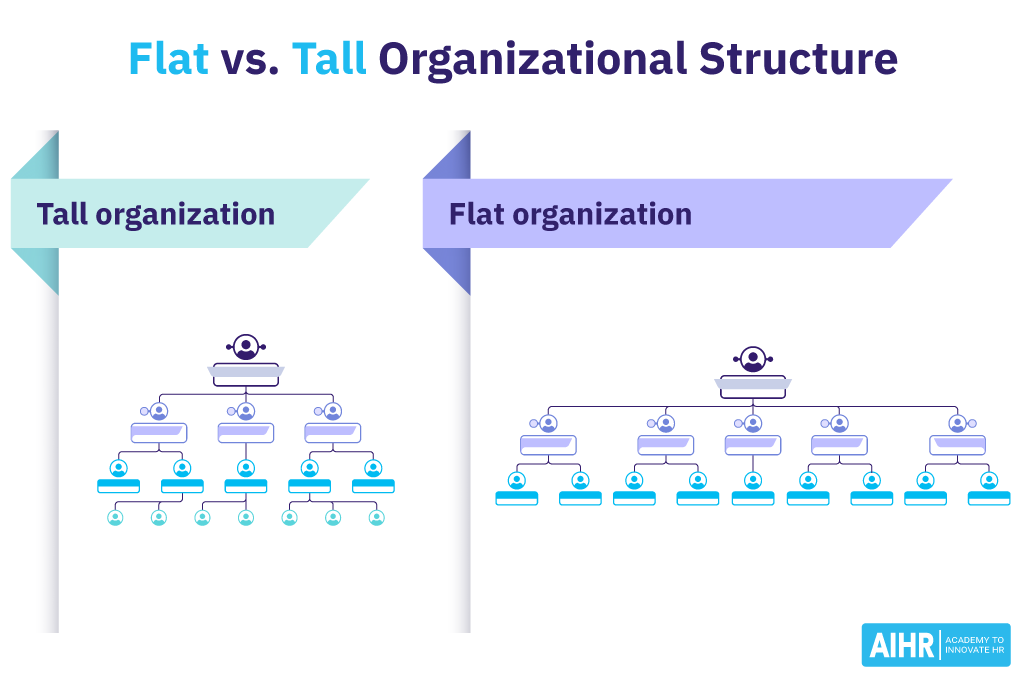
Flat vs. hierarchical organizational structure
Flat organizational structures focus most of their efforts on ground-level operations. Almost all the employees are at the bottom of the organizational chart, and many of the responsibilities normally held by middle management are instead distributed among the ground-level teams. There may be only one or two layers of management between these teams and the top level, if any. This creates a flat or horizontal organizational structure.
Decision-making tends to be rapid and efficient, with workers empowered to solve problems at the ground level or bring issues directly to upper management with no red tape in between.
A hierarchical organization is often referred to as “top-down”, meaning authority and responsibility cascade down a vertical organizational chart with many layers of management and authority.
This pyramid-like type of organizational structure is often used when many layers of oversight are needed to ensure compliance and tiered approval of decisions. Decision-making is much slower and takes time to process up or down the chain of command.
Optimize your organizational structure with strategic development
A flat organizational structure streamlines management, empowering employees and fostering faster decision-making. However, it requires thoughtful planning to avoid conflicts and maintain efficient operations.
With AIHR’s Organizational Development Certificate Program, you’ll gain the skills to implement and optimize flat structures, ensuring clear roles, open communication, and effective collaboration.
Flat organizational structure: Advantages and disadvantages
Advantages
- Efficiency: Flat organizational structures are not weighed down by the chain of command. This setup allows well-trained employees who understand their roles to work with high efficiency.
- Unified workforce: Flat hierarchies do not separate workers by rank, and management is very close to the workers. This can create a more unified workforce and a closer bond between teams and leadership.
- Rapid decision-making: Teams can make their own decisions or take problems directly to top leaders for quick decisions without red tape.
- Employee autonomy: Employees are often empowered to act autonomously within the realm of their duties.
- Reduced management costs: Companies do not have to spend on management levels, as oversight duties are shared between ground-level teams.
Disadvantages
- Less oversight and control: Fewer managers can result in less oversight and supervision, leading to a higher risk of mishaps.
- Potential for conflict: Less hierarchy to buffer interactions can magnify dysfunctional conflicts in a flat organizational structure. In other words, there are fewer natural barriers or channels to isolate or redirect tensions away from the daily workflow.
- Few promotion opportunities: Without management tiers to be promoted into, there is very little opportunity for upward mobility.
- Informal hierarchies: Employees may form their own hierarchies and have power struggles without a formal power structure.
Implementing a flat organizational structure: Tips for HR
- Clearly define teams, roles, and responsibilities: Flat organizational structures work best when everyone clearly understands the responsibilities of their roles. Because authority is distributed, the difference between teams and role-based duties is essential.
- Provide role titles instead of management levels: Appoint certain titles of responsibility, like Safety Officer, to distribute specific authority and oversight among ground-level teams.
- Recognize your best people: With few opportunities for promotion, employee recognition is critical for rewarding and engaging exemplary performance. Pay bumps for seniority and holding duty-bearing titles may also be appropriate.
- Foster a culture of responsible autonomy: In this type of organizational structure, autonomy and personal responsibility are key.
- Encourage open communication with leadership: Make sure teams know they can and should bring problems directly to upper management. Remove any illusion of red tape common in other organizational styles.
- Maintain teamwork and collaboration: Effective collaboration keeps a flat organizational structure efficient. Keep communication lines open and promote a culture where collaboration is valued and encouraged. Use project management and collaboration tools to track progress, manage tasks, and maintain visibility across different teams.
- Proactively address internal conflicts: Internal conflicts are the biggest challenge in a flat organizational structure. Address power struggles and personal conflicts directly without allowing them to fester or escalate.
4 other types of organizational structures
Other types of organizational structures besides the flat or horizontal organizational structure include:
1. Functional organizational structure
A functional organizational structure is a form of business organization made up of several departments based on specific skills and areas of expertise.
- Benefits: High level of expertise in specific areas, with employees grouped based on their function; clear reporting lines.
- Limitations: Slow response times due to centralized decision-making; limited view of organizational goals due to departments being focused on their own objectives.
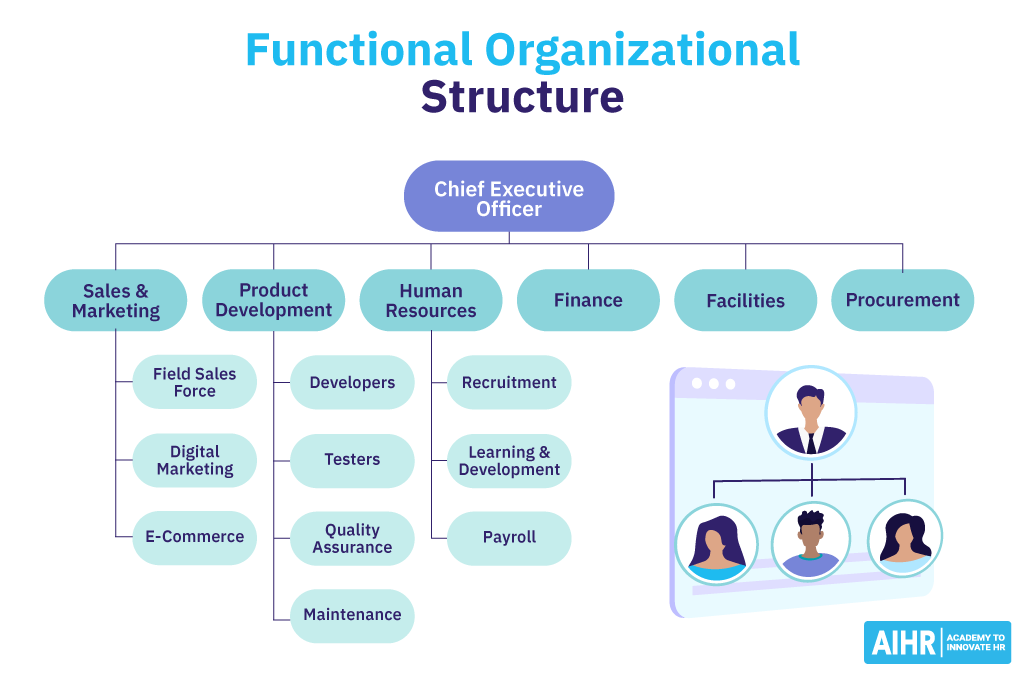
Companies that use this structure: Amazon, Apple
2. Divisional or regional structure
A divisional structure divides an organization into semi-autonomous units, each responsible for a product, service, or geographical area. This structure is common in large corporations with diverse product lines or different markets.
- Benefits: Strong focus on localization of requirements to market; allows for more flexibility in execution and faster-decentralized decision-making.
- Limitations: Can result in duplication; difficult to drive standardization.
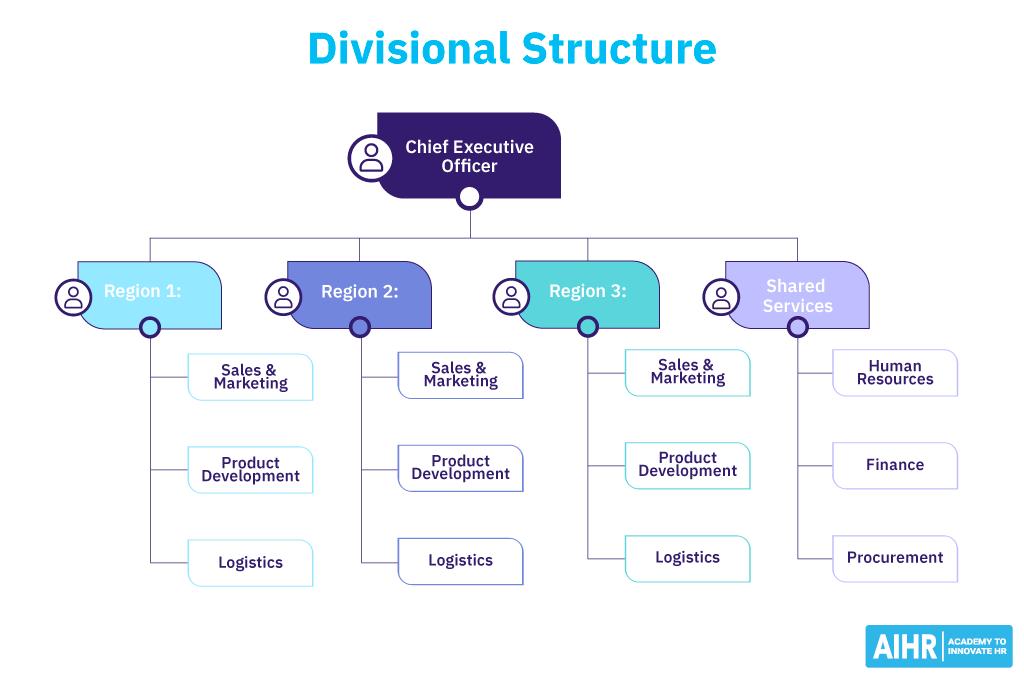
Companies that use this structure: McDonald’s, Disney
3. Matrix structure
A matrix structure combines elements of functional organizational structure with elements of divisional structure. Employees report to two bosses: one for their functional area (like marketing or finance) and one for their product or project.
- Benefits: Drives cross-disciplinary collaboration; shares expertise across the organization and if managed well, drives innovation.
- Limitations: Often internally focused and requires clear governance to work; internal tensions in terms of conflicting priorities and accountability may be common.
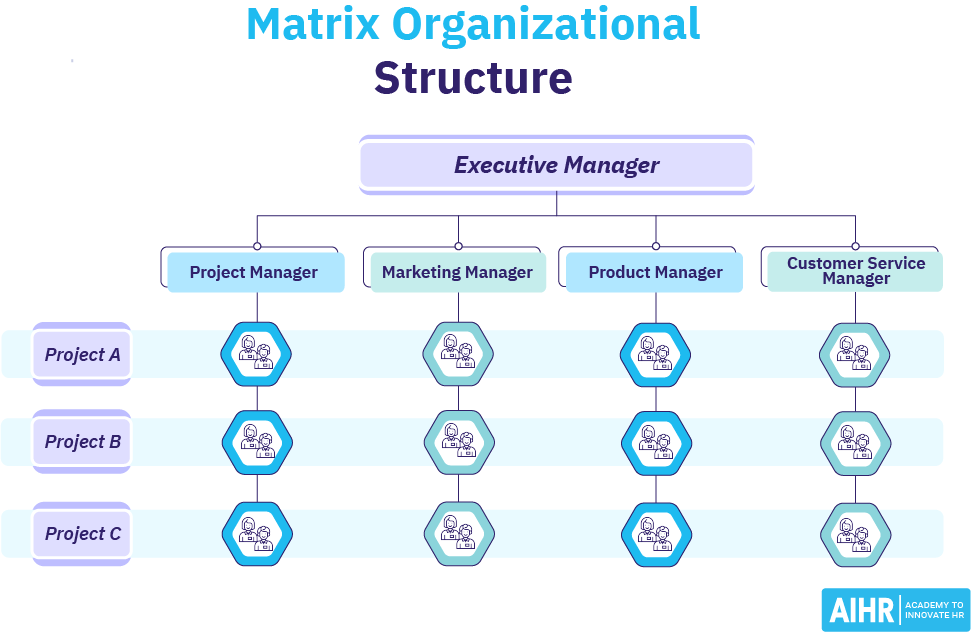
Companies that use this structure: Nike, Phillips
4. Agile or team-based structure
This structure is organized into project teams. These teams often function autonomously, working towards specific goals.
- Benefits: Leverages cross-functional capacity; more flexible in allocating resources.
- Limitations: Decision-making and allocation of resources are not always clear; can result in fragmented work practices and lack of consistency.
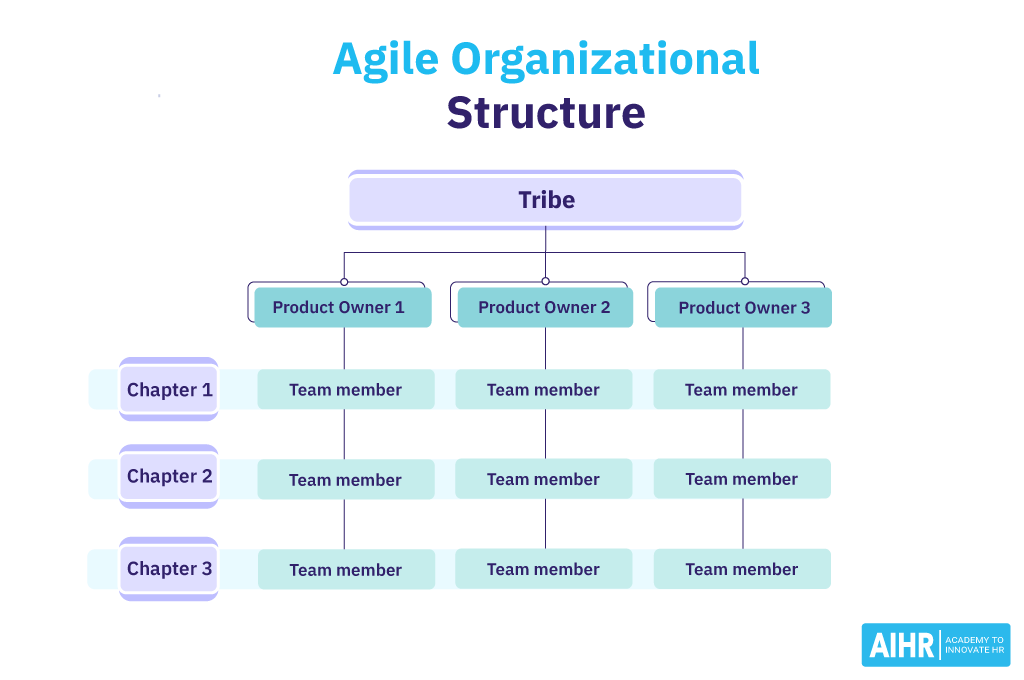
Companies that use this structure: Spotify, Airbnb
FAQ
A flat organizational structure is one with few or no middle management layers between employees and leadership. This setup encourages more direct communication, quicker decision-making, and often gives employees more responsibility and autonomy in their roles.
A flat organizational structure typically improves communication by reducing layers of hierarchy. Employees can communicate more directly with leadership and across teams, which speeds up decision-making and encourages transparency. However, with fewer middle managers, clear communication practices are crucial to avoid confusion or information overload.








